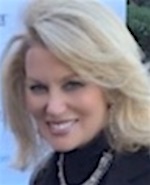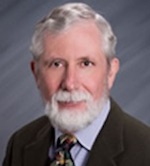Churches are renting their steeples for cellphone transmitters “usually” for 20-35 years, says law firm Varnum of Grand Rapids, which helps forge the contracts.
Second or third telecoms can add their equipment, says the firm. Telecoms renting spires include AT&T, T-Mobile, Verizon, Spectrum and Sprint.
Varnum says rents for prime locations can be $2,000 monthly.
Churches should make sure they get additional rent from second or third providers who add their antennas to the steeple, it says. This is the “biggest item” in the contract, it notes and failing to gain the rent is the “most common and most expensive error property owners make,” says Varnum.
Ultimate Betrayal--Health Advocates
|
|
Susan Foster, medical researcher who has helped firefighters block cell towers on firehouses, said “Churches, synagogues and mosques are playing with the lives of people and not doing their research.”
Churches should examine the research in BioInitiative.org “rather than taking the word of a telecom salesperson who gets them to sign a 20-year lease without any liability coverage in case parishioners or neighbors become ill,” she says.
“Ministers, priests, rabbis and mullahs are putting the financial reserves of their churches at risk, but most importantly, they are risking the lives and well-being of the flock they are charged with taking care of,” she added.
Children at church schools are especially at risk “since they are bathed in powerful radiation up to eight hours a day, five days a week,” she said. “Shame on the churches for ignoring the science. The new 4G and 5G transmitters will put even more powerful radiators in steeples.”
Seek Legal Advice, Says Varnum
|
|
"The initial lease offered a property owner is usually quite one-sided in favor of the wireless company," says an essay posted on the website of the law firm.
Such leases can significantly affect a church for decades such as restricting how the church uses its property, says John Pestle, partner in charge of the firm’s communication law practice. Alterations may be “more difficult, more expensive or even impossible,” it adds.
Churches should make sure they are not exposed to liability or restricted in its main operations, it also says. Restrictions should be put on the size of the antennas, it adds since “the fine print often provides that the wireless company can put up any kind of broadcasting antenna it wants.”
The new 4G and 5G cellphone antennas work over much shorter distances than earlier antennas. Hundreds of thousands of new transmitting stations will be needed and churches are a prime target of AT&T, T-Mobile, Verizon and the other telecoms. Church steeples have been sought as stations since the early 1990s, said California Watch, which merged with revealnews.org.
There are 350,000 religious facilities in the U.S.—314,000 Protestant and Christian; 24,000 Catholic, and 12,000 mosques, temples and non-Christian.
DCG, which helps churches to market their spires to telecoms, dismisses EMF health claims in two sentences midway through a 1,073-word release. “Many people still fear that cellular towers pose a health hazard because the equipment emits levels of radiation. Although there’s little evidence to support claims that cellular towers are dangerous, it is a common fear.

 Susan Foster
Susan Foster John Pestle
John Pestle
 Lo Isidro, senior director at Real Chemistry with more than a decade of strategic communications and PA experience, has joined Narrative Strategies.
Lo Isidro, senior director at Real Chemistry with more than a decade of strategic communications and PA experience, has joined Narrative Strategies. Nelson Fernandez, former North American chair of APCO Worldwide and managing director of Burson-Marsteller, has joined Volunteers in Medicine Berkshires as director of communications and PA.
Nelson Fernandez, former North American chair of APCO Worldwide and managing director of Burson-Marsteller, has joined Volunteers in Medicine Berkshires as director of communications and PA. Lilit Bargar, who was most recently an EVP in the healthcare practice at Weber Shandwick, comes on board at GCI Health as EVP, corporate practice lead.
Lilit Bargar, who was most recently an EVP in the healthcare practice at Weber Shandwick, comes on board at GCI Health as EVP, corporate practice lead.
 Five ways that successful thought leaders are made.
Five ways that successful thought leaders are made.


 Have a comment? Send it to
Have a comment? Send it to 
No comments have been submitted for this story yet.